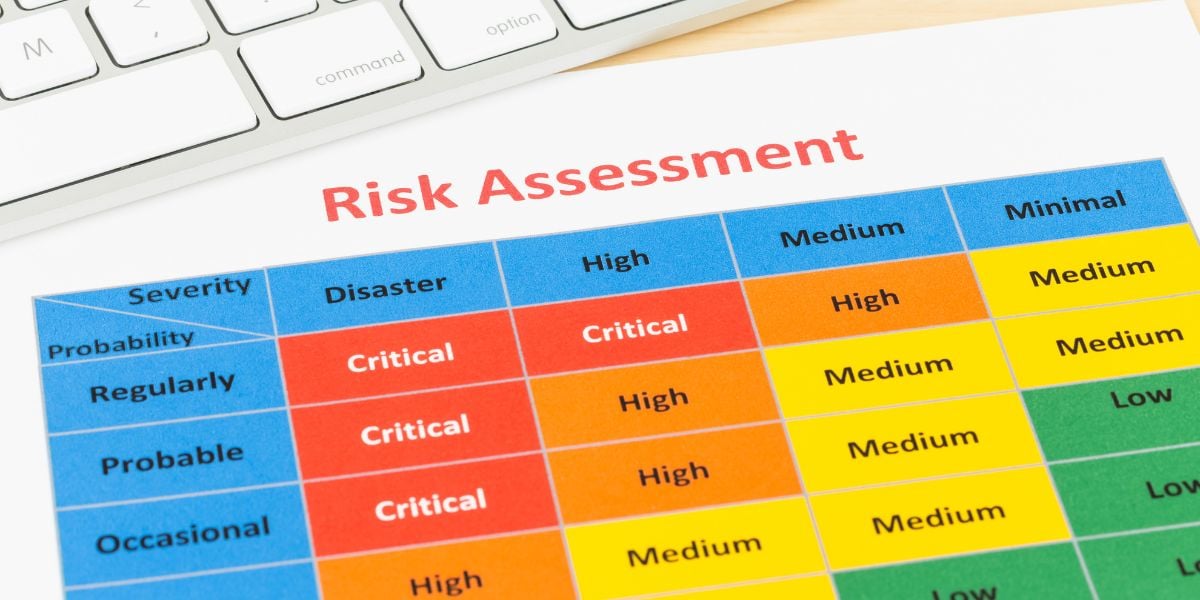
Performing a comprehensive risk assessment is essential for healthcare providers seeking to demonstrate their commitment to HIPAA compliance. This allows for the protection of privacy and security of protected health information (PHI). The specific process and techniques for conducting a risk assessment may vary depending on the industry, organization, and applicable regulatory requirements.
Differentiating between the types of risk assessments
The risk assessment process enables healthcare providers to mitigate vulnerabilities. It also serves as tangible evidence of their dedication to maintaining PHI's confidentiality, integrity, and availability. There are three main forms of risk assessments. However, any assessment must analyze and implement the following factors:
- Establish the scope: Define the scope of the assessment, including the systems, applications, and processes that handle PHI.
- Identify threats and vulnerabilities: Identify potential threats that could compromise the security of PHI.
- Evaluate current security controls: Review the existing security controls and safeguards in place.
- Determine the Likelihood and Impact: Assess the likelihood of threats occurring and the potential impact on the confidentiality, integrity, and availability of PHI.
- Analyze risks: Evaluate the risks by combining the likelihood and impact assessments. Prioritize risks based on their severity, considering the potential harm, likelihood, and available resources for mitigation.
- Develop risk mitigation strategies: Identify and implement appropriate measures to address identified risks. This may involve implementing technical safeguards, enhancing policies and procedures, providing training and awareness programs, or improving physical security measures.
- Documentation: Document the entire risk assessment process,
- Regular review and updates: Conduct regular reviews and updates of the risk assessment to address new threats, vulnerabilities, or changes. Risk assessments should be an ongoing process rather than a one-time activity.
Security risk assessment
HIPAA's Security Rule requires the implementation of a Security risk assessment. This assessment identifies potential weaknesses in the organization's adherence to Administrative, Technical, and Physical safeguards.
Specifications to consider:
- Conduct a comprehensive risk assessment: Perform a thorough assessment to identify potential risks and vulnerabilities to the confidentiality, integrity, and availability of PHI. This includes analyzing the systems, networks, applications, and processes involved in handling ePHI.
- Implement security measures: Based on the findings of the risk assessment, implement appropriate security measures to reduce identified risks and vulnerabilities to a reasonable and appropriate level. These measures can include technical safeguards (e.g., firewalls, encryption, access controls, HIPAA compliant email), physical safeguards (e.g., access restrictions, video surveillance), and administrative safeguards (e.g., policies, procedures, and employee training).
- Enforce compliance: Establish and enforce policies and procedures to ensure workforce members comply with the organization's security policies.
- Regularly review activity: Develop procedures to regularly review records of information system activity, such as audit logs, access reports, and security incident tracking reports. This ongoing monitoring helps identify any unauthorized access attempts, security incidents, or policy violations, enabling timely response and mitigation.
Privacy risk assessment
These assessments primarily focus on identifying and evaluating privacy-related risks associated with the use and disclosure of PHI. The objective is to ensure compliance with the administrative requirements of HIPAA's Privacy Rule and safeguard individuals' rights pertaining to their PHI.
By conducting such assessments, organizations can effectively establish and implement a privacy compliance program to address potential PHI risks.
Related: How to conduct a HIPAA compliance audit
Breach risk assessment
If a covered entity or business associate experiences a security incident or breach involving PHI, HIPAA requires them to conduct a breach risk assessment per the Breach Notification Rule. The purpose of this assessment is to determine the probability of compromised PHI resulting in harm to individuals. It involves evaluating the nature and extent of the breach, the types of PHI involved, and any potential harm to individuals.
Related: Preparing for an OCR HIPAA compliance audit
Importance of risk assessments
By conducting these assessments, organizations gain a deeper understanding of the potential risks and vulnerabilities within their systems and processes. This knowledge is a foundation for comprehensive policies and procedures that address specific security, privacy, and breach-related concerns.
Information from Security assessments can then help formulate security policies and procedures that encompass technical safeguards, access controls, data encryption, incident response protocols, and employee training programs. These measures are essential for safeguarding PHI against unauthorized access, breaches, and other security incidents.
Privacy assessments help organizations develop policies and procedures that outline proper consent practices, patient rights management, data-sharing protocols, and guidelines for handling and protecting PHI. These measures ensure that individuals' privacy rights are respected and that the organization's data practices align with the requirements of the HIPAA Privacy Rule.
In the event of a breach, conducting a Breach Risk assessment helps organizations formulate appropriate policies and procedures for breach response, mitigation, notification, and ongoing risk management. By incorporating these measures, organizations can effectively address breaches and minimize the impact on individuals and their sensitive health information.
Factors to consider when conducting a risk assessment
Risk assessments, unfortunately, do not have a one size fits all. Each organization has factors that it should consider before the creation and implementation of its own plan.
Small healthcare organizations:
- Resource constraints: Recognize potential limitations in budget, staff, and expertise. Optimize the use of available resources to conduct a focused risk assessment that addresses critical areas of concern.
- Streamlined approach: Prioritize risks based on their potential impact and likelihood. Focus on essential assets, critical processes, and key vulnerabilities to ensure a cost-effective and efficient risk assessment.
- Regulatory compliance: Understand the specific regulatory requirements for your industry and size. Tailor the risk assessment process to meet compliance obligations while addressing the unique risks faced by your organization.
Medium-sized healthcare organizations:
- Organizational complexity: Consider the organization's diverse departments, systems, and processes. Coordinate with stakeholders and subject matter experts to ensure a comprehensive risk assessment covering all critical areas.
- Resource allocation: Allocate appropriate resources, both human and financial, to conduct an in-depth risk assessment. Strive for a balance between the level of detail and the available resources to ensure a thorough evaluation.
- Compliance and governance: Establish clear governance structures to oversee the risk assessment process. Ensure compliance with relevant regulations and standards, such as HIPAA or industry-specific requirements.
Large healthcare organizations:
- Enterprise-wide perspective: Take a holistic approach to risk assessment, considering the organization. Evaluate risks across various departments, business units, and locations to capture the interconnectedness of systems and processes.
- Risk appetite and tolerance: Define the organization's risk appetite and tolerance levels, considering the impact and likelihood of identified risks. Align the risk assessment with these thresholds to guide decision-making and resource allocation for risk mitigation efforts.
- Integration and collaboration: Foster collaboration between different teams and departments involved in the risk assessment process. Establish clear communication channels and mechanisms for sharing information, findings, and remediation strategies across the organization.
Subscribe to Paubox Weekly
Every Friday we'll bring you the most important news from Paubox. Our aim is to make you smarter, faster.




